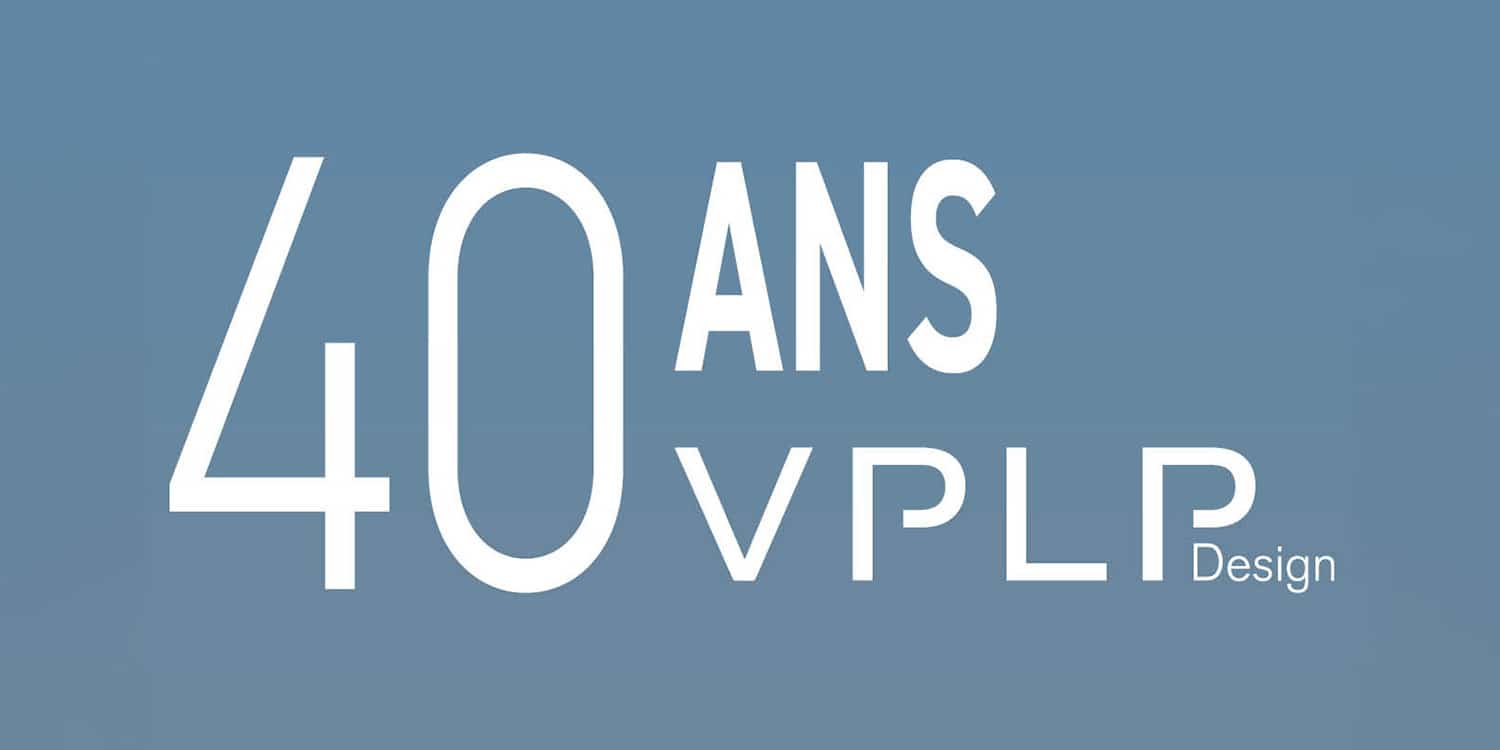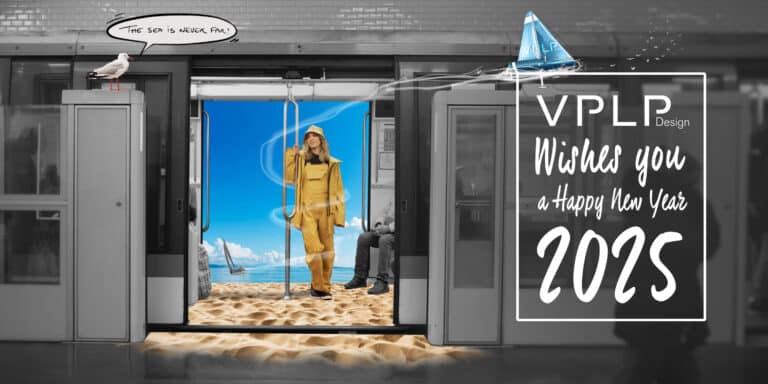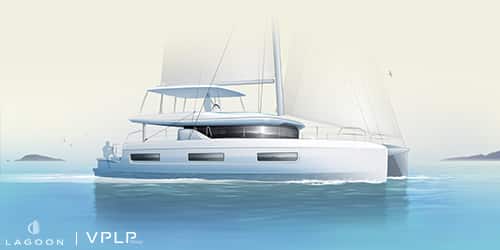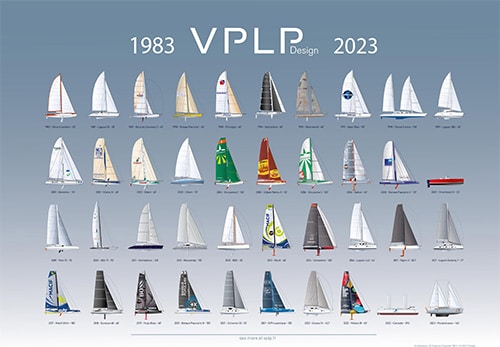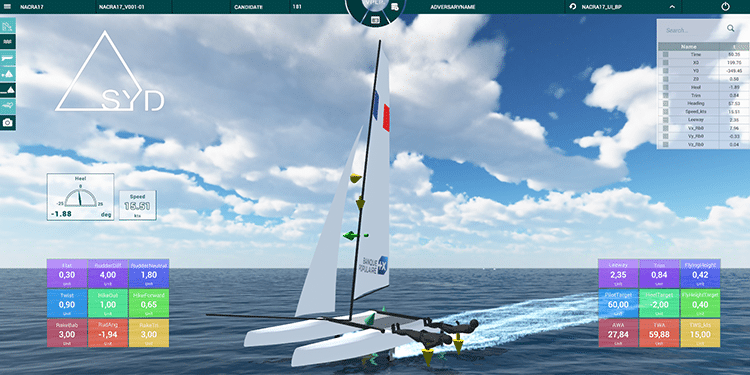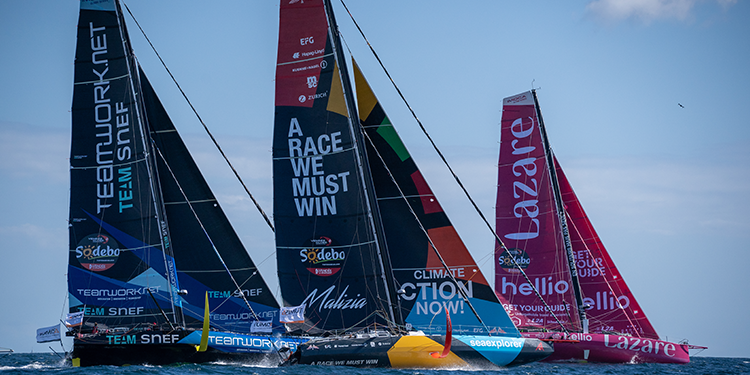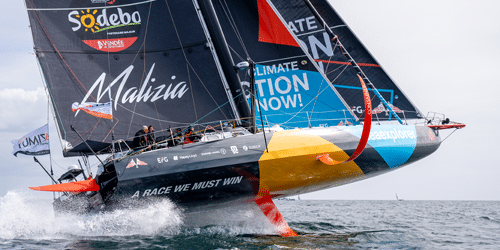VPLP Design celebrated 40 years in business on 12 December in Paris with over a hundred guests and co-founders Marc Van Peteghem and Vincent Lauriot Prévost. What will the firm be like in forty years’ time? Simon Watin, chief executive officer, and the five partner architects and engineers, Quentin Lucet, Mathias Maurios, Xavier Guisnel, Xavier Guilbaud and Antoine Lauriot Prévost, share with us their predictions for the next four decades.
Before looking at the prospects for the firm, could you give us a snapshot of VPLP Design at 40?
Simon Watin: VPLP at 40 is a firm employing forty people across three business sectors (shipping, cruising, racing) and three professions (designers, architects, engineers). We might be the naval design firm with the largest spectrum of competencies in the world. Obviously, we aren’t number one everywhere, but we cover quite a few subjects and are indeed number one in certain fields. While our shipping division is showing strong growth, our core activities remain cruising and racing which, depending on the year, alternate as our number one business sector.
Is this business mix going to evolve over the next forty years?
Quentin Lucet: Undoubtedly. Over the last forty years much of our focus has been on racing and cruising, two sectors that complement each other in terms of impact and innovation, on the one hand, and stability and creativity on the other. Prospects for development reside in the growth of our third division, which focuses on shipping, and making sure that all three divisions continue to complement each other. Today, we see that technology transfers occur in multiple directions. Take for example decarbonization: we have drawn on our efforts in cruising and racing to further our shipping design business in this area. Our strengths in R&D and understanding physical properties, key to our work on racing boats, trickle down into our shipping design work. Considerations relating to energies and impacts spread in the other direction, from our shipping sector work into our other divisions. We intend to continue driving this eternal back and forth between divisions so that each one can benefit from the innovations developed by the others and thus offer new solutions to our customers. This is the source of our firm’s success.
Let’s take a closer look at VPLP’s Racing Division, which began with the Gérard Lambert back in 1983. What will be the major issues for the coming years?
Antoine Lauriot Prévost: The key issue for the Racing Division is – and will continue to be – the design of innovative and competitive racing boats that can win events and smash records! Certain boat classes are following the lead of the IMOCAs and are beginning to integrate the notion of environmental responsibility into their rules, and this has to be addressed in the design phase. This is a good thing because it will help promote the development of an ecosystem centred on these fundamental issues for the future. That said, our Racing Division will continue to focus on competitiveness and innovation, and this will allow us to occupy the forefront in terms of design tools. VPLP’s inherent interdisciplinarity allows the Racing Division to share its advances with all our projects, regardless of the desired outcome, whether that be speed or energy efficiency.
Xavier Guisnel: We endeavour to be proactive on all these subjects. Thanks to our Racing Division and the tools we have developed for simulation and data analysis, our research has always ploughed the furrow of performance first and foremost. This capacity for measurement and quantification can always be transposed to environmental performance, a subject which is progressively gaining traction in the boat industry. This involves using lower impact composite materials, but it also concerns energy efficiency and low-impact design. These relatively recent considerations are being requested for cruising and shipping projects, although not so much in the racing world – but we’ll get there. It’s interesting for a firm like ours to have this card up our sleeve and we will do further research in this connection.
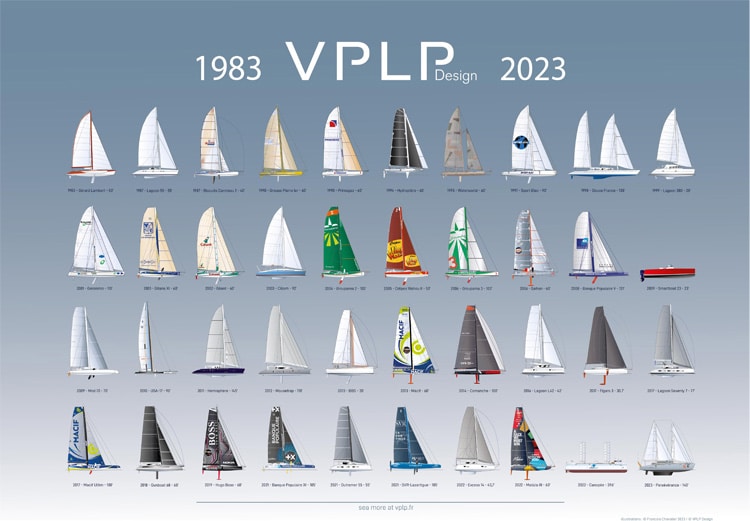
What changes will we see in the leisure marine industry in the coming years?
Mathias Maurios: The leisure marine industry is a sector which regularly experiences major advances. We no longer cruise like we did forty years ago, so if we compare a Lagoon 55 from 1987 and the current Lagoon 55, the differences are edifying, perhaps more so than a racing trimaran from 1984 and an Ultim of today. What will a Lagoon be like in 2064? Will it have a wingsails? Foils? A hybrid sail/motor? Will we go back to something simpler? It’s a difficult question to answer today, but the underlying trend currently being observed tends towards lower impact and greater sobriety.
Xavier Guilbaud: Today we have brands like Gunboat which position themselves at the crossroads between cruising and racing, combining sailing performance and luxury. They satisfy a real demand from sailing enthusiasts who appreciate the aesthetic and functionality of what we now call a “classic rig”, one with flexible sails, winches, sheets… This market is very healthy but we know that it’s no longer the only one attracting customers. We have observed the emergence of a different behaviour from a clientele which attaches great importance to the environmental performance of sailing, while desiring simplicity of handling. As a result, I believe we will see in the next few years the emergence of technologies that allow us to automate the actual sailing of the boat to make life aboard simpler.
VPLP Design is involved in several decarbonization projects in the shipping sector, in particular wingsail propulsion projects. Is it a priority for the firm to maintain an active presence in this sector?
Simon Watin: Of course we want to continue contributing to the expansion of wind-powered cargo shipping, and the fact that we were among the first to look into the subject has helped us maintain a high profile. However we wouldn’t want to betray our values. We love innovation too much for that. So in addition to our historic business, we have a desire to work on projects that take us in new directions, a desire to collaborate with ship owners and operators who are asking themselves new questions which require new solutions. This approach is a really vital part of VPLP’s DNA.
VPLP at 40 employs forty people. Will you be eighty strong at 80?
Everybody: Eighty is a lot of people! We, the partners, are attached to the notion that a small, close-knit team is best. We all agree to not develop the firm to a size which would betray this ideal. This doesn’t mean we don’t want grow. However we want to remain the firm that people choose specifically because they can fulfil their potential, be part of a team that is passionate about what it’s doing.
And will VPLP Design be opening other divisions?
Simon Watin: Yes, that’s something we discuss regularly among ourselves. We could, for example, envisage the creation of a Design Division whose scope would extend to non-maritime activities. We have often talked about setting up an Engineering Division in recognition of the increasing level of technical complexity in certain fields, especially offshore racing. The debate is ongoing!
